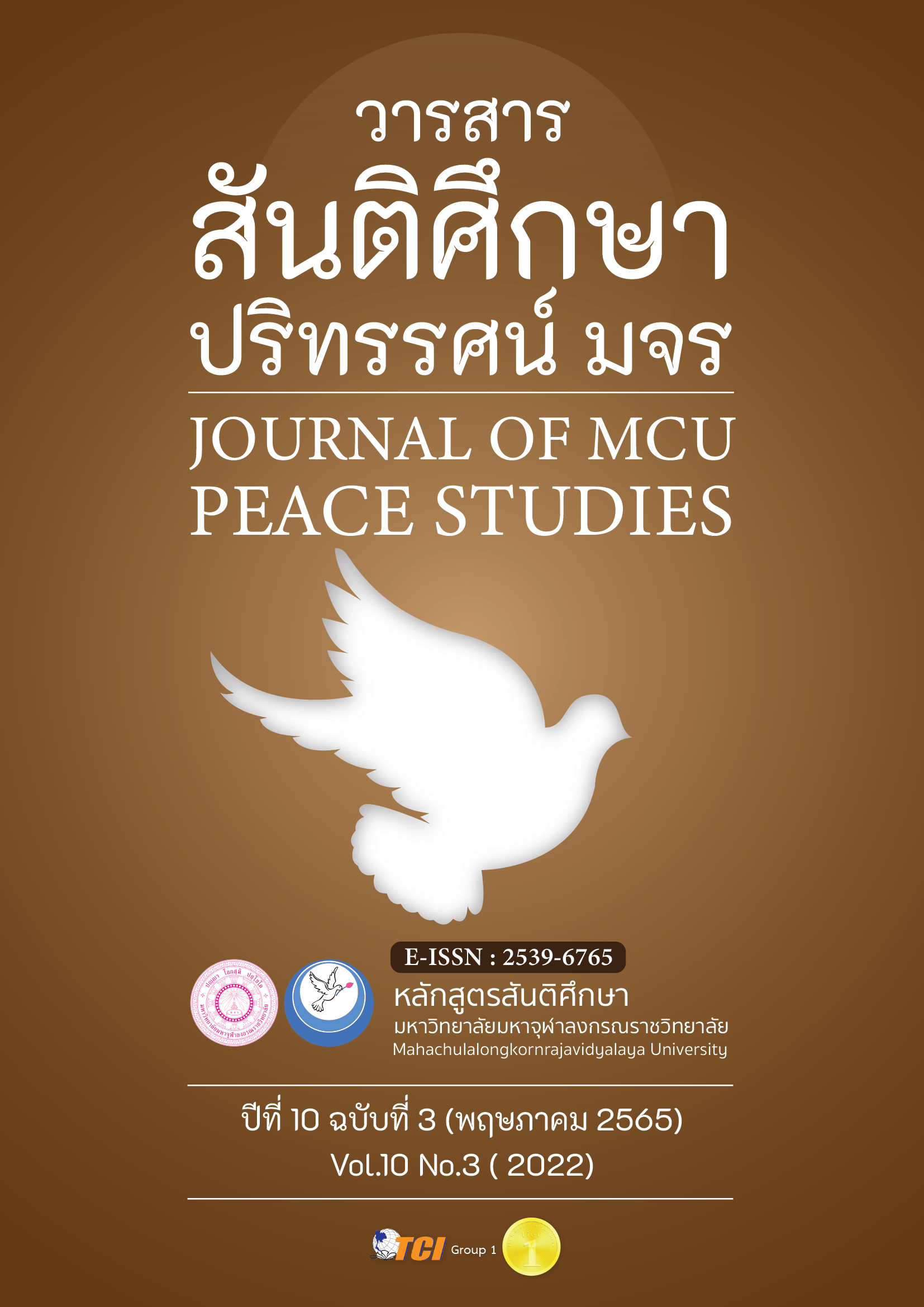การพัฒนารูปแบบการนิเทศการสอนอ่านภาษาอังกฤษ อย่างมีวิจารณญาณของนักศึกษาฝึกประสบการณ์วิชาชีพครู
Main Article Content
บทคัดย่อ
บทความวิจัยนี้มีวัตถุประสงค์เพื่อ 1) พัฒนารูปแบบการนิเทศสอนอ่านภาษาอังกฤษอย่างมีวิจารณญาณของนักศึกษาฝึกประสบการณ์วิชาชีพครู และ 2) เพื่อตรวจสอบคุณภาพของรูปแบบฯ การวิจัยในครั้งนี้เป็นการวิจัยและพัฒนาโดยมีกลุ่มตัวอย่างในการวิจัย ได้แก่ ครูพี่เลี้ยง 2 คน นักศึกษา 2 คน และนักเรียนระดับชั้นมัธยมศึกษาที่ 6 โรงเรียนหนองพอกวิทยาลัย 60 คน ได้มาโดยการเลือกแบบเจาะจง เครื่องมือ ได้แก่ แบบวิเคราะห์เนื้อหา แบบสัมภาษณ์ แบบบันทึกการสังเกต แบบทดสอบ แบบสอบถาม แบบบันทึกการจัดการเรียนรู้แบบพรรณนาความ แบบประเมิน และการสนทนากลุ่ม สถิติ ได้แก่ ค่าเฉลี่ย ค่าร้อยละ ส่วนเบี่ยงเบนมาตรฐาน การวิเคราะห์เนื้อหา และค่าทดสอบที (t-test) แบบ Dependent
ผลการวิจัยพบว่า 1) รูปแบบการนิเทศที่เรียกว่า “NIPIE Model” ประกอบด้วย 5 ขั้น คือ 1.1) ขั้นศึกษาความต้องการจำเป็น 1.2) ขั้นศึกษาให้ความรู้ก่อนการนิเทศ 1.3) ขั้นวางแผนการนิเทศ 1.4) ขั้นดำเนินการนิเทศ และ 1.5) ขั้นประเมินผล/ติดตามผล ซึ่งรูปแบบได้รับการประเมินจากผู้เชี่ยวชาญ 5 คนอยู่ในระดับดีมาก และ 2) ผลจากการตรวจสอบประสิทธิผลของรูปแบบโดยการนําไปใช้ในโรงเรียน พบว่า 2.1) ครูพี่เลี้ยงมีสมรรถภาพการนิเทศการสอนอ่านภาษาอังกฤษอย่างมีวิจารณญาณหลังการใช้รูปแบบสูงกว่าก่อนการใช้รูปแบบ 2.2) นักศึกษามีสมรรถภาพการจัดการเรียนการสอนอ่านภาษาอังกฤษอย่างมีวิจารณญาณหลังการใช้รูปแบบสูงกว่าก่อนการใช้รูปแบบ 2.3) ความสามารถในการอ่านอย่างมีวิจารณญาณของนักเรียนหลังเรียนสูงกว่าก่อนเรียนอย่างมีนัยสําคัญทางสถิติที่ระดับ 0.05 2.4) กลวิธีการอ่านอย่างมีวิจารณญาณของนักเรียนที่นักเรียนใช้มากที่สุด คือ การตั้งคำถาม การระบุข้อเท็จจริง/ข้อคิดเห็น และการอนุมาน และ 2.5) ครูพี่เลี้ยงมีความพึงพอใจต่อรูปแบบการนิเทศอยู่ในระดับมาก 2.6) นักศึกษามีความพึงพอใจต่อรูปแบบการนิเทศอยู่ในระดับมาก และ 2.7) นักเรียนมีความเห็นด้วยกับการจัดการเรียนการสอนอ่านอย่างมีวิจารณญาณของนักศึกษาอยู่ในระดับมากที่สุด
Article Details

อนุญาตภายใต้เงื่อนไข Creative Commons Attribution-NonCommercial-NoDerivatives 4.0 International License.
ทัศนะและความคิดเห็นที่ปรากฏในบทความในวารสาร ถือเป็นความรับผิดชอบของผู้เขียนบทความนั้น และไม่ถือเป็นทัศนะและความรับผิดชอบของกองบรรณาธิการ ยินยอมว่าบทความเป็นลิขสิทธิ์ของวารสาร
เอกสารอ้างอิง
Abdullah, K. (1998). Critical Reading Skills: Some Notes for Teachers. (Research Report). Singapore: National Institute of Education.
Almasi, J. F. (2003). Teaching Strategies Processes in Reading (f. b. M. Pressley Ed.). New York: The Guilford Press.
Dewey, J. (1934). Art as experience. Carbondale: Southern Illinois University Press.
Glickman, D., Stephen P., & Gordon Jovita M. (2010). Supervision and Instruction Leadership: A Developmental Approach. (8th ed.). Boston, M.A.: Allyn and Bacon.
Kruse, K. (2008). Introduction to Instructional Design and the ADDIE Model. Retrieved October 15, 2020, from http://www.transformativedesigns.com/id_systems.html
Laowreandee, W. (2011). The Supervision. (9th ed.). Nakhon Pathom: Silpakorn University.
Nilpan, M. (2012). Research Methodology in Education. (7th ed.) Nakhon Pathom: Educational Research and Development Center.
Nonhuaro, M. (2014). The Development of an Empowerment Evaluation Model for Enhancing the Educational Assessment Competency of In-service Teachers in Prachinburi Primary Educational Service Area Office 2. (Doctoral Dissertation). Srinakharinwirot University. Bangkok.
Panich, V. (2013). The Teacher to Student, Build the Flipped Classroom. (3rd ed.) Bangkok: The Siam Commercial Foundation.
Teacher Profession Experience Training. (2015). Internship 1 and Internship Handbook. Roi Et: Roi Et Rajabhat University.
Robinson, S.G. (2000). Teacher Job Satisfaction and Levels of Clinical Supervision in Elementary School. (Doctoral Dissertation). University of Southern Mississippi.
Rumelhart, D. E. (1981). Schemata: The Building Blocks of Cognition, Comprehension and Teaching Research Review. New York: International Reading Association.
Satjapiboon, S. (2017). The Development of Teacher Professional Experience Supervision Model to Enhance Instructional Competency for Pre-Service Teacher. Journal of Educational Research, Faculty of Education Srinakharinwirot University, 11(2), 177-192.
Skehan, P. (1996). A Framework for the Implementation of Task-Based Instruction. Applied Linguistics, 17(1), 38-62.
Sinlarat, P. (2015). Philosophy of Creative Education and Productivity. Bangkok: Chulalongkorn University Printing House.
Wongwanich, S. (2007). Needs Assessment Research. Bangkok: Chulalongkorn University.


